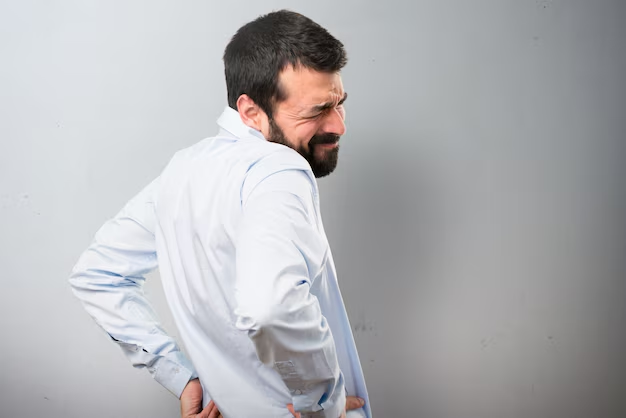Understanding Scoliosis: Does It Truly Cause Back Pain?
Scoliosis, often discussed yet widely misunderstood, is a condition that impacts millions globally. For those dealing with it, one pressing concern is whether scoliosis directly causes back pain. Navigating through this topic necessitates delving into the intricacies of the spine, understanding how scoliosis manifests, and what individuals can do to manage any discomfort effectively. Let’s explore this topic in depth to clarify the correlation between scoliosis and back pain and offer insights into potential strategies for contending with it.
What is Scoliosis?
The spine is not just a crucial skeletal structure supporting the body; it’s also essential for ensuring flexibility and protection of the nervous system. Scoliosis is a condition characterized by an abnormal lateral curvature of the spine. While a normal spine appears straight from the back view, a spine affected by scoliosis curves to the side, forming a C or S shape. The severity of the curve can vary significantly, from mild to severe.
Types of Scoliosis
Idiopathic Scoliosis: The most common type, especially in adolescents, where the cause is unknown.
Congenital Scoliosis: Resulting from vertebral abnormalities present at birth.
Neuromuscular Scoliosis: Associated with underlying neuromuscular conditions like cerebral palsy or muscular dystrophy.
Degenerative Scoliosis: Also known as adult-onset scoliosis, often seen in older adults due to spinal degeneration.
The Connection Between Scoliosis and Back Pain
Does scoliosis cause back pain? The answer is both yes and no. While scoliosis can be a contributing factor to back pain, not all individuals with the condition experience pain. Understanding why some people have pain and others don’t is key.
Factors Influencing Back Pain in Scoliosis
Severity of the Curve: Larger curves, especially those over 30 degrees, can lead to more pronounced discomfort. They often result in muscle strain as the body tries to compensate for the imbalance.
Age of Onset: Adult-onset scoliosis, or degenerative scoliosis, is often associated with back pain due to the wear and tear of the spinal discs and joints.
Muscle Imbalance: Scoliosis can lead to unequal muscle tension on either side of the spine, leading to pain from overworked muscles.
Nerve Compression: Severe curves can impinge on nerve roots, causing pain or numbness.
Psychosocial Factors: Stress and anxiety related to body image and physical limitations can exacerbate the perception of pain.
Managing Scoliosis-Related Back Pain
Dealing with back pain from scoliosis can be challenging, but several approaches can help manage symptoms and improve quality of life.
Non-Surgical Interventions
Physical Therapy: Tailored exercises can strengthen the back muscles, improve posture, and reduce pain.
Pain Management Techniques: Methods such as heat therapy, massage, and acupuncture can provide relief.
Bracing: For adolescents with growing spines, bracing can prevent further curve progression and potentially alleviate pain.
Lifestyle Modifications
Exercise: Regular low-impact activities such as swimming or walking can enhance flexibility and muscular endurance.
Weight Management: Maintaining a healthy weight reduces the load on the spine.
Ergonomics: Adjusting workstations and seating arrangements can correct posture and ease discomfort.
Mind-Body Approaches
Yoga and Pilates: These practices can enhance core strength, improve posture, and relieve stress, all of which are beneficial for scoliosis sufferers.
Mindfulness and Meditation: They can help manage stress and alter pain perception, promoting a sense of well-being.
When to Consider Medical Intervention
While non-surgical methods are effective for many, certain scoliosis cases may require medical intervention.
Surgical Options
Spinal Fusion: A common procedure for severe scoliosis, where vertebrae are fused to straighten and stabilize the spine.
Vertebral Body Tethering: A newer, less invasive option suitable for some adolescents.
Surgery is typically considered when the curve is severe or rapidly worsening, and when pain is debilitating and unresponsive to non-surgical treatments.
Consulting a Healthcare Professional
If you or someone you know has scoliosis and experiences back pain, a consultation with a healthcare professional is essential. They can provide a personalized treatment plan, considering factors like the degree of curvature, age, and overall health.
Embracing a Holistic Perspective
Ultimately, managing scoliosis and any associated back pain is about embracing a comprehensive approach that addresses physical, mental, and emotional well-being. It’s important to stay informed about the condition and to explore various options that might work best for individual needs.
Understanding that scoliosis and its effects on back pain vary widely among individuals is crucial. While some experience significant discomfort, others may face only mild symptoms or none at all. The focus should always be on individual experiences and tailored approaches to care.
Summary: Key Takeaways on Scoliosis and Back Pain
- Scoliosis Type Matters: Different types (idiopathic, congenital, neuromuscular, degenerative) have varying implications for pain.
- Pain Factors: Curve severity, age, muscle imbalance, and nerve involvement significantly influence pain levels.
- Non-Surgical Management: Includes physical therapy, exercise, weight management, and ergonomic adjustments.
- Mind-Body Connection: Techniques like yoga, Pilates, mindfulness, and meditation can aid in pain management.
- Medical Insight: Always consult healthcare professionals for evaluation and a personalized care plan.
- Holistic Approach: Combining physical, mental, and emotional strategies can optimize management and improve quality of life.
🌟 Embrace a comprehensive perspective by focusing on awareness, prevention, and tailored care to navigate scoliosis confidently while mitigating any associated back pain. 🌟
